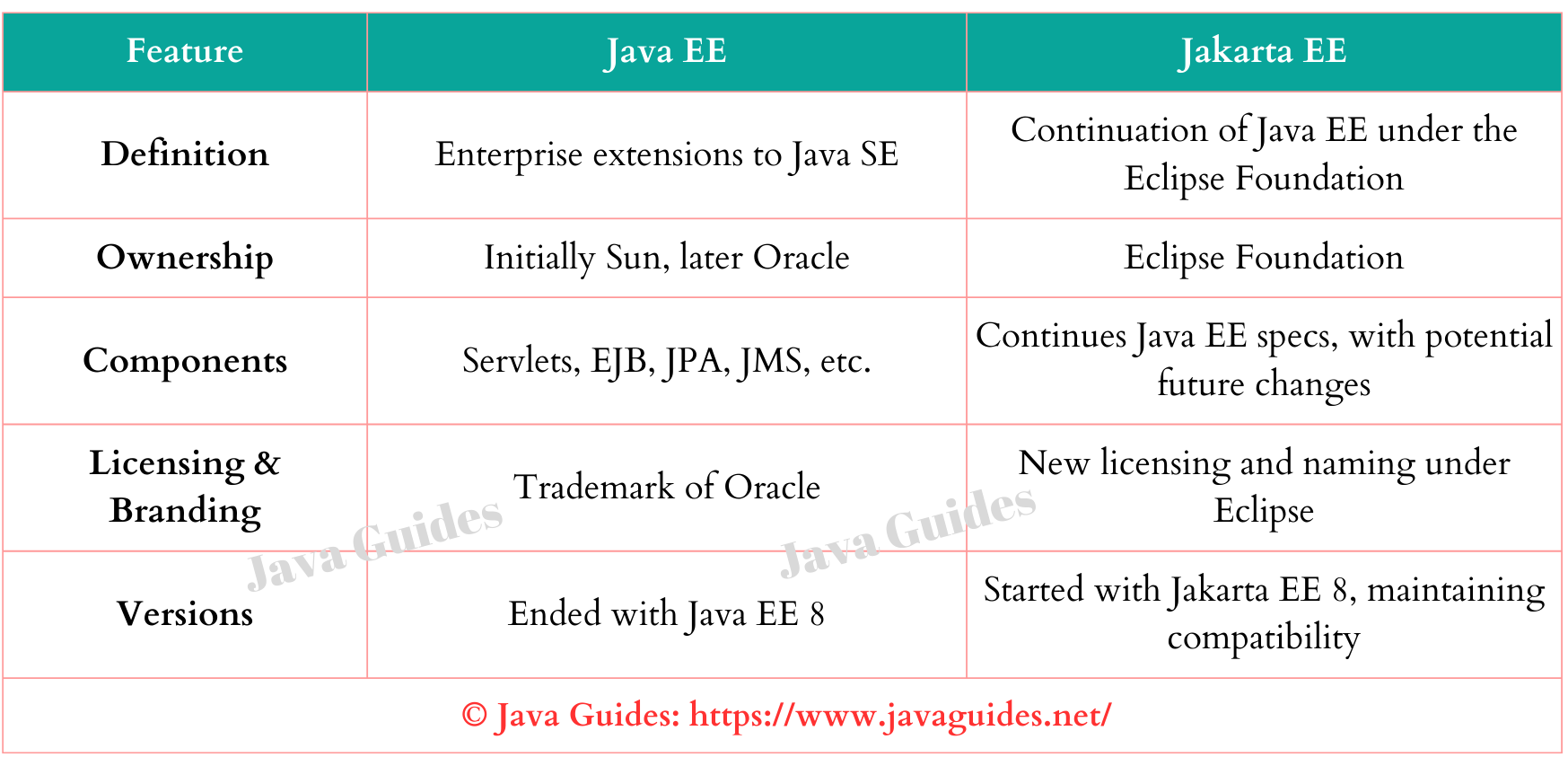The world of enterprise Java has seen a significant transition with the movement from Java EE (Enterprise Edition) to Jakarta EE. This shift has implications for the future development and governance of the enterprise Java standards. Let's explore the differences between Java EE and Jakarta EE, what led to this change, and what it means for developers and enterprises.
Ownership: Java EE was initially developed by Sun Microsystems and later overseen by Oracle.
Components: Java EE included technologies like Servlets, EJB (Enterprise JavaBeans), JPA (Java Persistence API), JMS (Java Message Service), JSF, and more.
Versions: The last version under the Java EE name was Java EE 8.
Ownership: Jakarta EE is managed by the Eclipse Foundation, with the support and collaboration of various industry partners.
Components: Jakarta EE maintains compatibility with Java EE but allows for more open development and potential future changes to the specifications.
Licensing and Branding: The transition to Jakarta EE required changes in licensing and naming due to legal restrictions on the Java name, which remains a trademark of Oracle.
Versions: Jakarta EE 8 was the first official release under the new stewardship, maintaining compatibility with Java EE 8.
Here's a table summarizing the key differences:
Definition: Java EE was a set of specifications that extend the Java SE with specifications for enterprise features such as distributed computing and web services.
Ownership: Java EE was initially developed by Sun Microsystems and later overseen by Oracle.
Components: Java EE included technologies like Servlets, EJB (Enterprise JavaBeans), JPA (Java Persistence API), JMS (Java Message Service), JSF, and more.
Versions: The last version under the Java EE name was Java EE 8.
Jakarta EE
Definition: Jakarta EE is the continuation of the Java EE project under the stewardship of the Eclipse Foundation.
Ownership: Jakarta EE is managed by the Eclipse Foundation, with the support and collaboration of various industry partners.
Components: Jakarta EE maintains compatibility with Java EE but allows for more open development and potential future changes to the specifications.
Licensing and Branding: The transition to Jakarta EE required changes in licensing and naming due to legal restrictions on the Java name, which remains a trademark of Oracle.
Versions: Jakarta EE 8 was the first official release under the new stewardship, maintaining compatibility with Java EE 8.
Here's a table summarizing the key differences:
| Feature | Java EE | Jakarta EE |
|---|---|---|
| Definition | Enterprise extensions to Java SE | Continuation of Java EE under the Eclipse Foundation |
| Ownership | Initially Sun, later Oracle | Eclipse Foundation |
| Components | Servlets, EJB, JPA, JMS, etc. | Continues Java EE specs, with potential future changes |
| Licensing & Branding | Trademark of Oracle | New licensing and naming under Eclipse |
| Versions | Ended with Java EE 8 | Started with Jakarta EE 8, maintaining compatibility |
Implications for Developers and Enterprises
Compatibility: Existing Java EE applications can migrate to Jakarta EE without significant changes.
Innovation: The shift to a more community-driven model opens up new possibilities for innovation and responsiveness to industry needs.
Long-Term Support: Jakarta EE ensures continued support and development for the enterprise Java ecosystem.
Conclusion
The transition from Java EE to Jakarta EE marks a pivotal moment in the history of enterprise Java. It reflects a broader industry trend towards community-driven development and open standards. While the technologies remain consistent, the change in governance sets the stage for a more dynamic and responsive future for enterprise Java.
For developers and enterprises alike, Jakarta EE offers a pathway to modern, efficient, and community-aligned development. Embracing Jakarta EE means participating in a renewed vision for one of the world's most influential and enduring technology platforms.


Comments
Post a Comment
Leave Comment